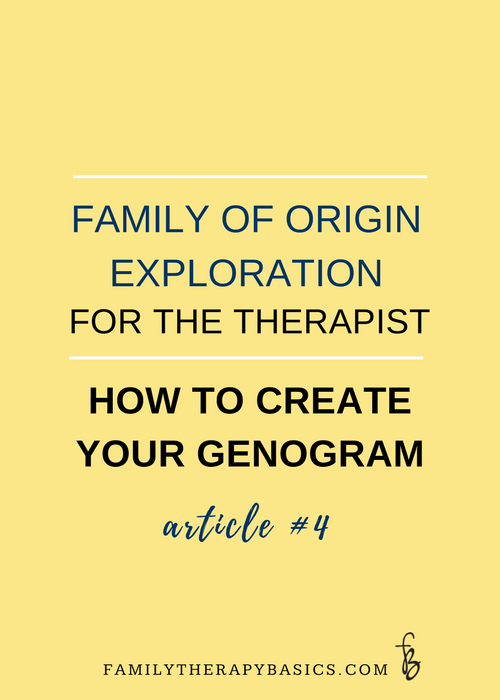The Family of Origin series
Newest article on top
In article four of the Family of Origin Exploration for the Therapist series, I explain initial steps for creating your genogram. Before adding more detail to your genogram, including relational patterns and dynamics, it's important to explore the family rules and structure of your family of origin, so that you can add the appropriate relational dynamics to your genogram.
In article three of the Family of Origin for the Therapist series, you learned 3 simple steps for how to begin family of origin (FOO) exploration: 1) read Bowen’s chapter, 2) observe your FOO experience, and 3) reflect on what you learned. Hopefully, your curiosity has led to significant understanding.
Understanding is the foundation of Bowen Family Systems Theory (BFST). Bowen (1985) believed that if clients could understand themselves as members of their FOOs and as created by their histories, they could begin and continue significant change.
In today’s post, I offer the next step in developing understanding: Creating your genogram. I explain how to create a basic genogram that you can expand as you continue your exploration.
So far, I’ve covered why family of origin exploration is important for therapists, as well as the common fears that accompany facing our parents. If you haven’t read these first two articles, please read them before continuing.
In this post, I explain how to begin the process of family of origin (FOO) exploration.
Although I am writing this series for therapists, the truth is, when it comes to facing our families, just as when it comes to our personal change, we are only human--we are the same as our clients. This is one of the benefits of our own family of origin (FOO) exploration: We can confidently ask clients to examine their histories, because we have, and we know what it takes.
In today’s post, I explain how I learned about and implemented family of origin (FOO) exploration and its resulting impact on my relationships. I also present background on the idea of FOO exploration for therapists, as well as its benefits.






Relational dynamics are also referred to as relationship patterns or relationship lines; they are the symbols used on a genogram to connect people, as well as illustrate details about their relationship.
In today's post, I will provide symbols for the five fundamental relational dynamics (closeness, distance, cut-off, fusion/enmeshment, and conflict), and show you how to add them to your genogram.